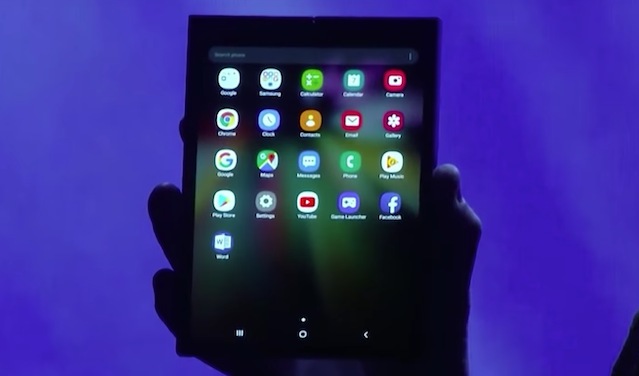The world’s top smartphone manufacturer, Samsung, has provided the first tantalizing glimpse of their very real, foldable phone at the Samsung Developer Conference 2018 in San Francisco. This advancement in display technology has been widely discussed throughout the year, and Samsung has finally revealed their highly-anticipated version of the technology called the Infinity Flex Display. “When it’s open, it’s a tablet offering a big screen experience. When closed, it’s a phone that fits neatly inside your pocket,” explained the senior vice president of Mobile Product Marketing at Samsung, Justin Denison, while demonstrating the device. The prototype boasts a 7.3-inch tablet display that can be folded over and over again without any signs of wear or degradation. The device is supported by the Android OS, allowing users to run up to 3 applications simultaneously, driving smartphone functionality to the next level. “The Infinity Flex Display represents an entirely…
The communication and technology giants AT&T, Samsung Electronics America (SEA) and Samsung Austin Semiconductor (SAS) have announced that they will join forces to create America’s first 5G Innovation Zone, focusing on the use of 5G in manufacturing. The Innovation Zone will be located in Samsung Austin Semiconductor’s 160-acre campus in Austin, Texas, one of the most advanced semiconductor facilities in the world. The goal behind this innovative project is to explore the futuristic idea of a Smart Factory, powered by 5G technology. “This is a first. We’ll be testing the real-world impact 5G will have on the manufacturing industry,” commented Mo Katibeh, the CEO at AT&T Business. “Ultimately, we plan to use what we learn from this 5G Innovation Zone to help create better technology experiences and improvements in Samsung Austin Semiconductor’s plant along with creating a future blueprint for people and businesses across all industries.” By…
T-Mobile US recently addressed speculation about potentially shifting its network equipment from Nokia to Ericsson. The carrier confirmed continued collaboration with both companies, dismissing rumors that impacted Nokia’s market shares.
Ookla’s analysis of the iPhone 16 reveals improved 5G performance over its predecessors in several regions, including the U.S. and Canada, where speeds surpassed 324 Mbps. However, Samsung’s Galaxy S24 excelled in latency and upload speeds.
Vodafone Idea is set to launch commercial 5G services by March 2025, entering the competitive field amidst Bharti Airtel and Reliance Jio’s services started in 2022. Targeting 17 of India’s 22 telecom circles, Vi’s strategic approach involves upgrading 75,000 4G sites..
Vodafone Idea is enhancing their 4G network with Ericsson to introduce 5G in key Indian regions. Leveraging Ericsson’s advanced technology, Vodafone aims to modernize and expand, despite financial hurdles. Their $3.6 billion deal signifies a commitment to regaining market share by implementing robust digital infrastructure.
Spark New Zealand has chosen Nokia to expand its 4G and 5G networks, enhancing VoIP capabilities across various cities. Utilizing Nokia’s 5G AirScale suite, Spark aims to simplify operations and boost efficiency.
Indian operator Bharti Airtel has significantly expanded its 5G network to encompass 140,000 villages across India. This initiative highlights Airtel’s commitment to enhancing digital connectivity in rural areas. Already covering 800,000 villages with its 4G network, Airtel’s expansion accelerates their mission of providing high-speed internet across India, supported by both 4G and 5G technologies.
SoftBank and Nokia have partnered to research cutting-edge communication technologies, focusing on AI-RAN and 6G innovations. By leveraging Nokia’s Cloud RAN and conducting field tests, they aim to transform digital society. This collaboration underscores the critical role of AI in telecommunication, promising scalable and reliable communication networks essential for smart cities.
Germany is investing €5 billion in a new semiconductor manufacturing facility in Dresden through the European Semiconductor Manufacturing Company (ESMC) initiative. The facility will leverage advanced technologies like FinFET and aims to reduce Europe’s dependence on U.S. and Chinese semiconductor imports. This strategic move promises to enhance Germany’s role in the global semiconductor industry.












